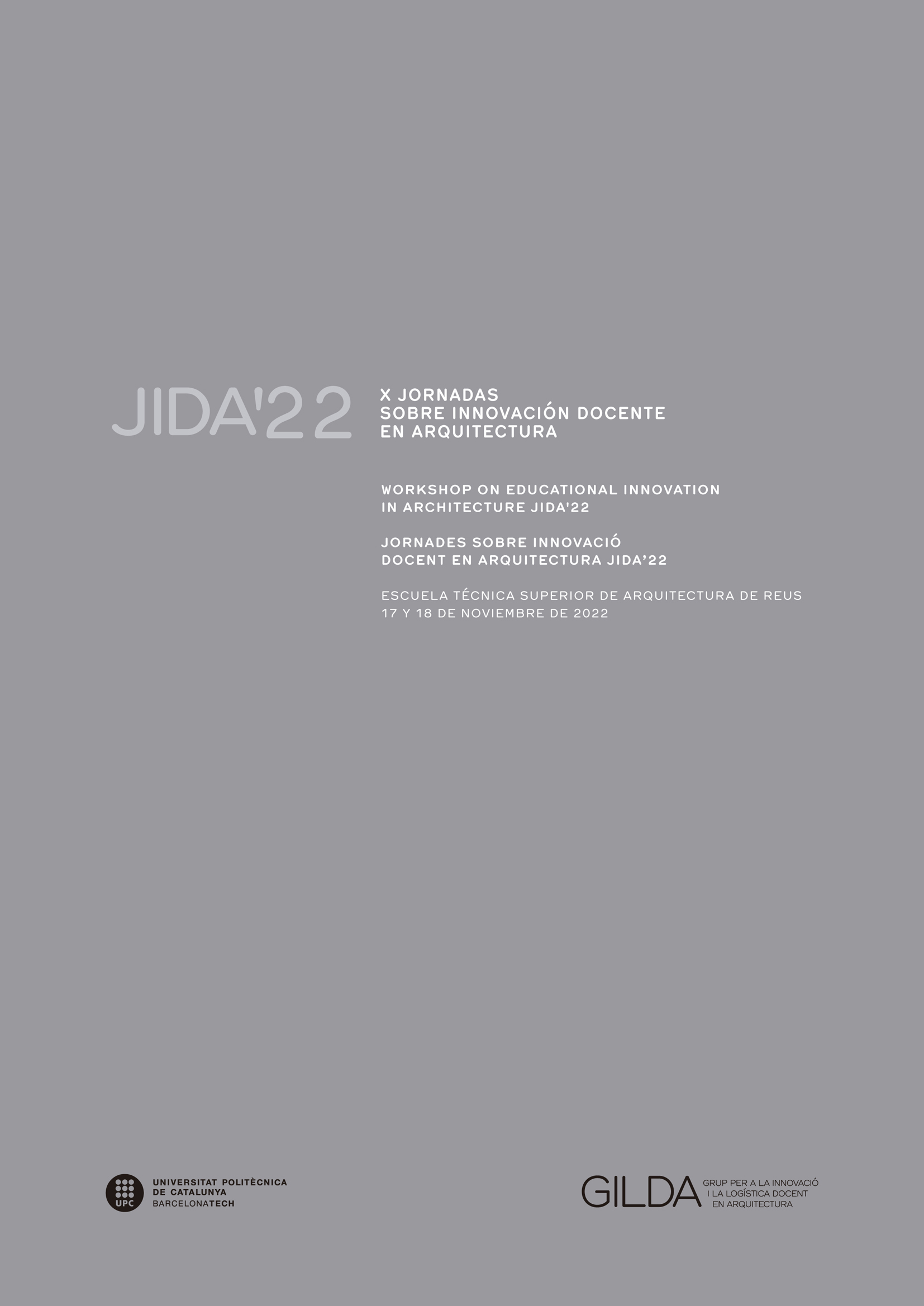Laboratory of Elements
learning from the dissection of architecture
DOI:
https://doi.org/10.5821/jida.2022.11623Keywords:
experimental architecture, constructive elements, laboratory, methodology, projectsAbstract
A laboratory is defined as a place equipped with the necessary means to carry out research, experimentation and diagnostic procedures on a case, under controlled conditions. If we establish that in architecture our case is the project, we could consider that the definition of laboratory is close to what we know as studio. From this perspective, the second year teaching team of the School of Architecture at Universidad San Sebastián proposes the Laboratory of Elements (LdE) as an instance of experimental pedagogy, in which the learning process is developed methodologically through the practice of dissection, where the architectural project is sectioned to study its fundamental parts and then, through iterations and experimental applications, make them protagonists of the design process.
References
ÁLVAREZ-AGEA, A. y PÉREZ-DE LA CRUZ, E. (2021). Land Arch: el arte de la tierra como Arquitectura, la Arquitectura como arte de la tierra. IX Jornadas sobre Innovación Docente en Arquitectura (JIDA'21), Escuela Técnica Superior de Arquitectura de Valladolid, 11 y 12 de Noviembre de 2021: libro de actas, p. 551-566. Barcelona: Grup per a la Innovació i la Logística Docent en l'Arquitectura (GILDA). <https://doi.org/10.5821/jida.2021.10582>
BATAKOJA, M. y HRISTOVA, A. (2015). Frames of References: Art Museums as Unique Visual Media. Култура/Culture, 5, p. 53-64.
ESCUELA DE ARQUITECTURA UNIVERSIDAD SAN SEBASTIÁN (s.f.). Planificación de unidades de aprendizaje y resultados de aprendizaje asociados, Taller de Arquitectura I.
FRAMPTON, K. (1999). Reflexión Sobre el Campo de Aplicación de la Tectónica. En Estudios Sobre Cultura Tectónica. Madrid: Akal Arquitectura, p. 11-38.
JARA VENEGAS, A. E.; PÉREZ DE LA CRUZ, E. y CARALT, D. (2019). El Taller de Práctica: una oficina de arquitectura en el interior de la escuela. VII Jornadas sobre Innovación Docente en Arquitectura (JIDA'19), Escuela Técnica Superior de Arquitectura de Madrid, 14 y 15 de Noviembre de 2019: libro de actas, p. 345-360. Barcelona: Universitat Politècnica de Catalunya. Iniciativa Digital Politècnica. <https://doi.org/10.5821/jida.2019.8342>
KOOLHAAS, R.; AMO y HARVARD GRADUATE SCHOOL OF DESIGN. (2018). Elements of architecture. (J. Westcott & S. Petermann, Eds.). Taschen.
NATU, A. (2021). Students' choice of final-year architectural design projects at undergraduate level in architecture. International Journal of Design Education, 16(1), p. 27-36. <https://doi.org/10.18848/2325-128X/CGP/v16i01/27-36>
PÉREZ DE LA CRUZ, E.; CARALT, D. y ESCOBAR CONTRERAS, P. (2018). Introducción al taller de diseño a partir del perfil de ingreso del estudiante. VI Jornadas sobre Innovación Docente en Arquitectura (JIDA'18), Escuela de Ingeniería y Arquitectura de Zaragoza, 22 y 23 de Noviembre de 2018: libro de actas, p. 597-611. Barcelona: Universitat Politècnica de Catalunya. Iniciativa Digital Politècnica. <https://doi.org/10.5821/jida.2018.5526>
SCHÖN DONALD A. (1998). El Profesional Reflexivo: cómo piensan los profesionales cuando actúan. Paidós.
SEMPER, G. (2013). El estilo en las artes técnicas y tectónicas o estética práctica. Buenos Aires, Argentina. Azpiazu ediciones.
TERENZINI, P. (2010). El egresado, reflejo de su institución educativa. En Consejo Nacional de Educación. (ed.), calidad de los egresados, responsabilidad institucional ineludible (1A. Ed.). Santiago de Chile: Comisión Nacional de Acreditación.



















